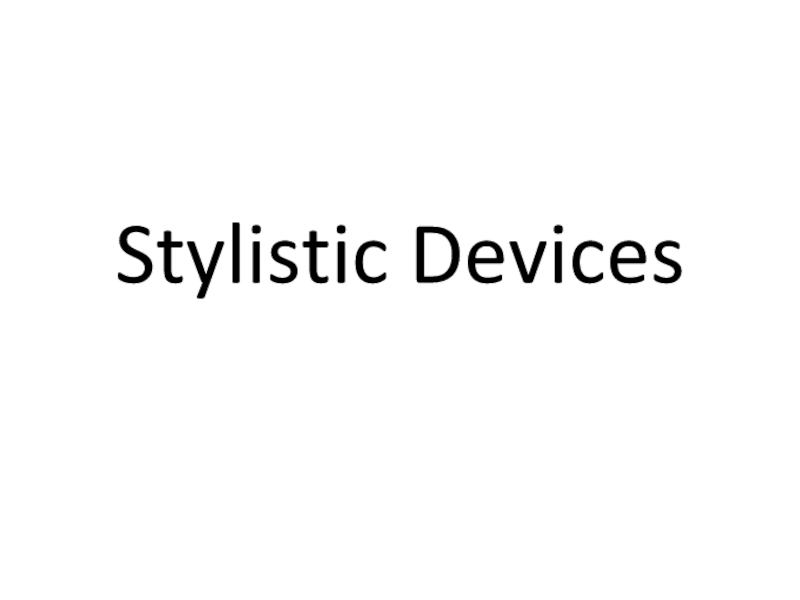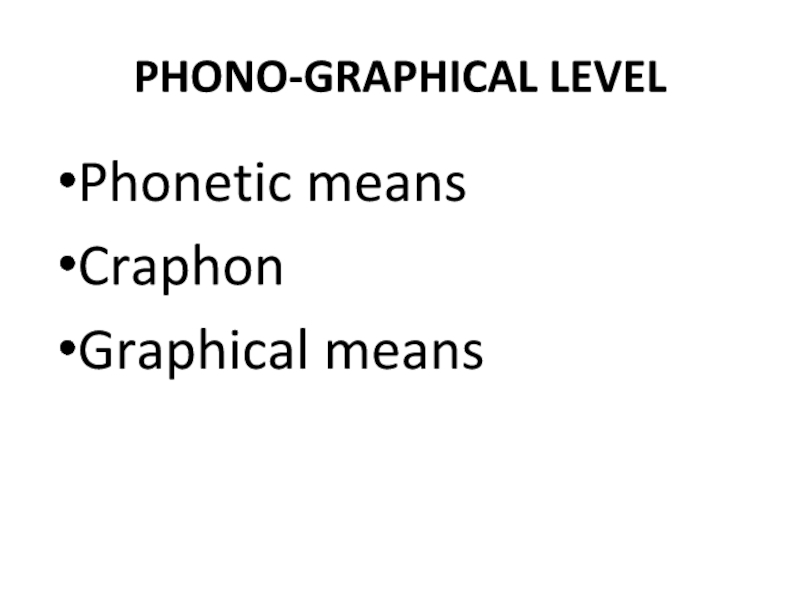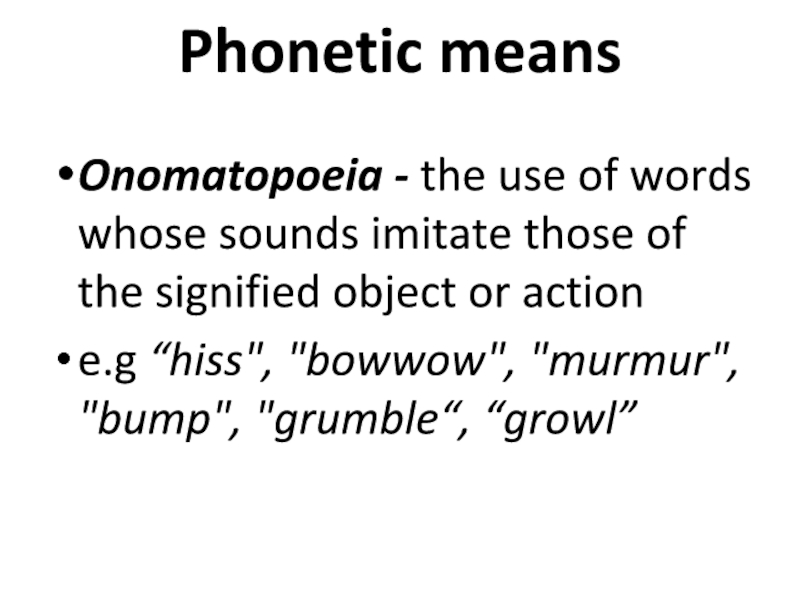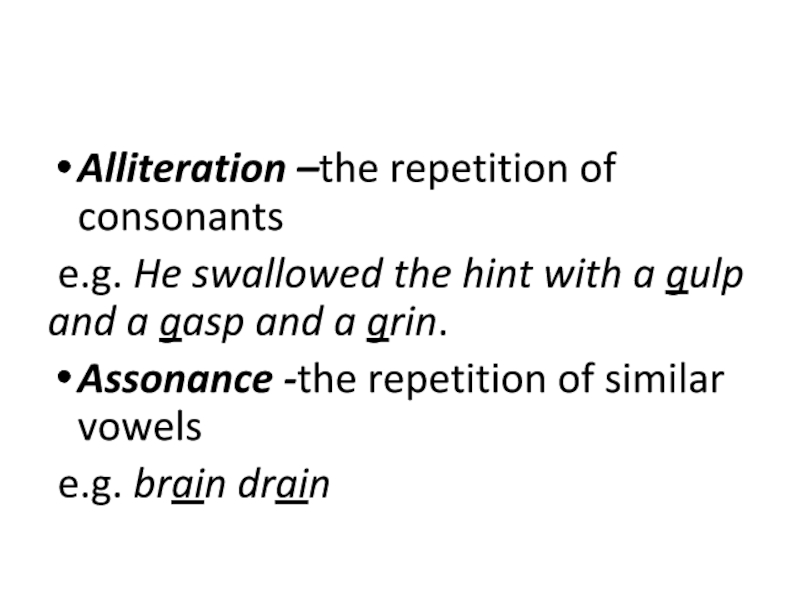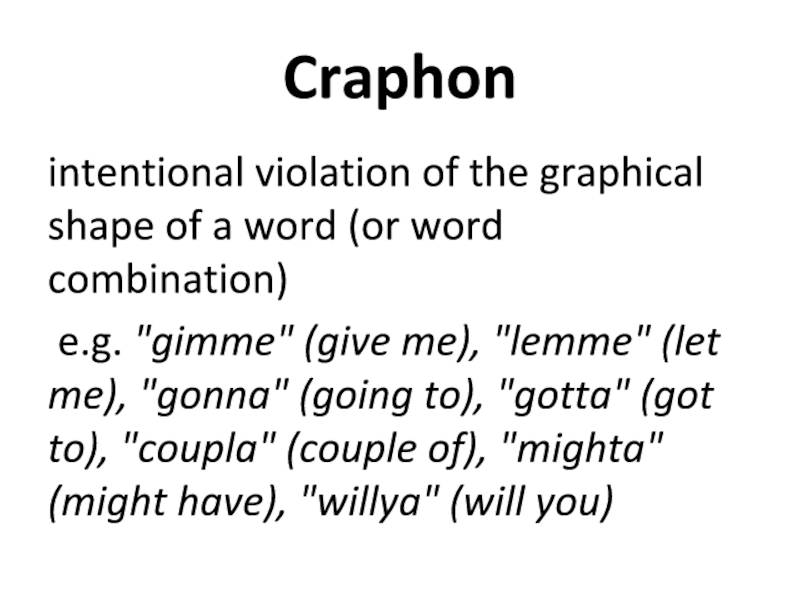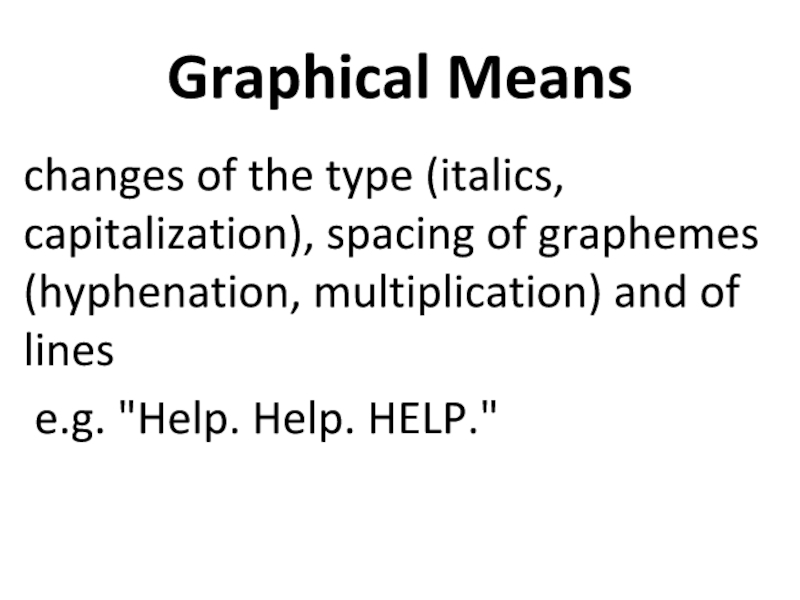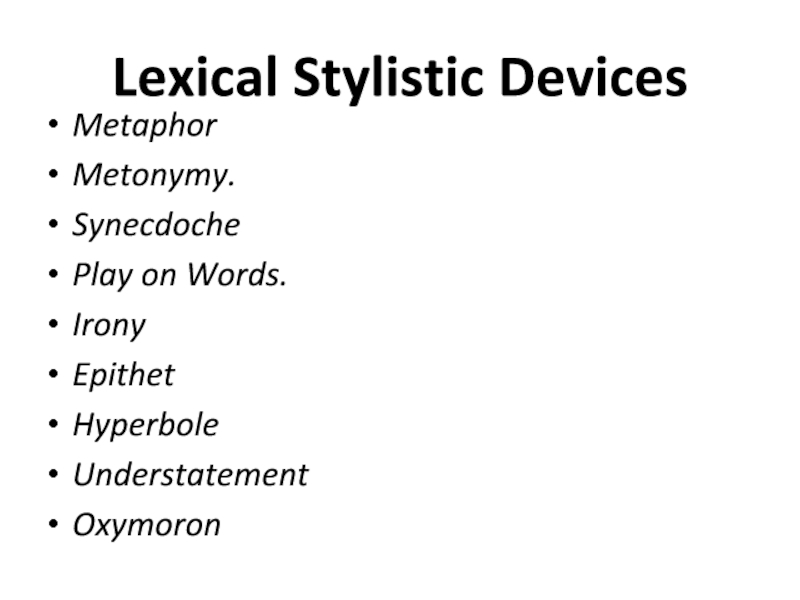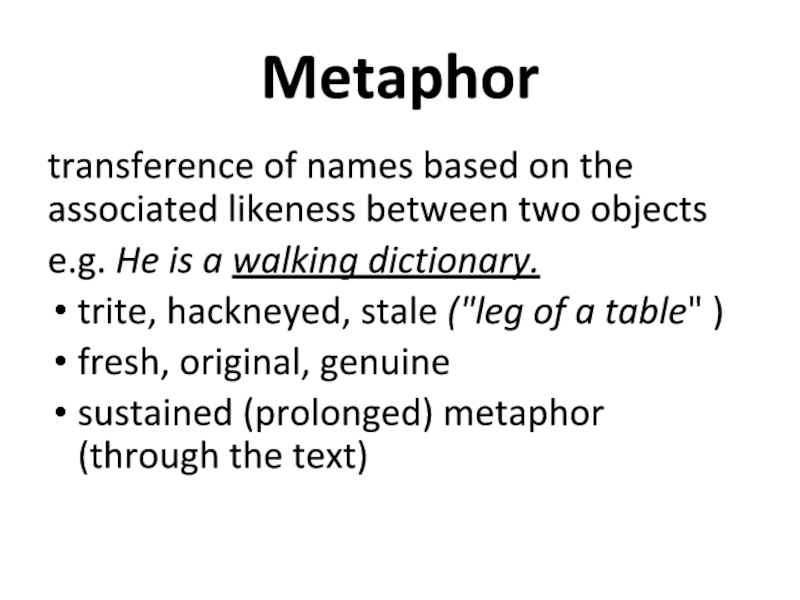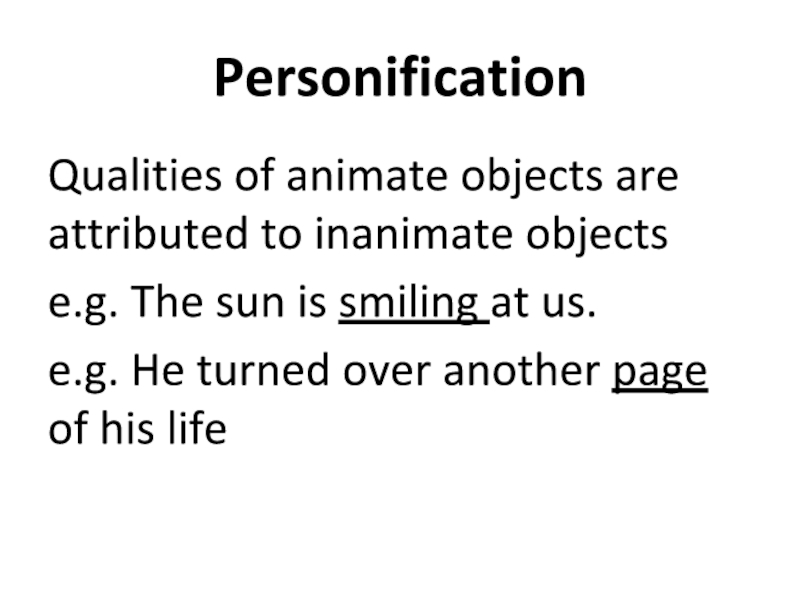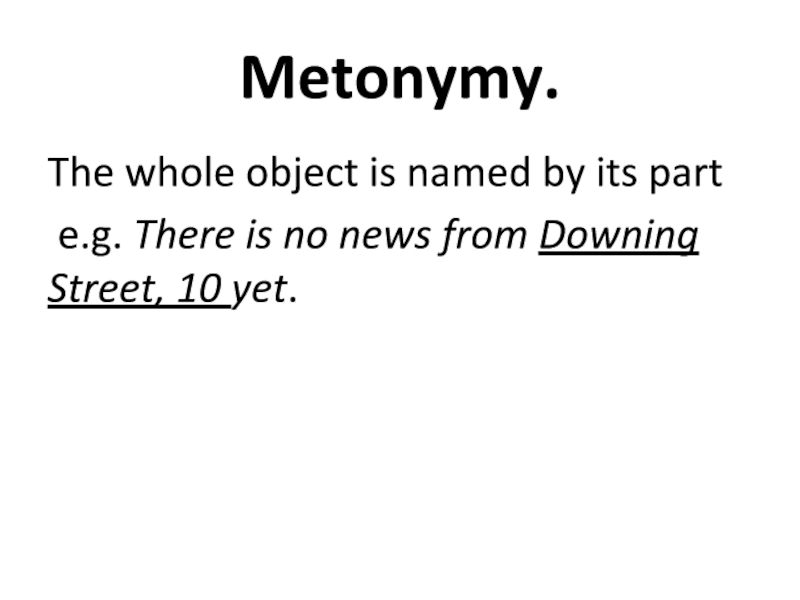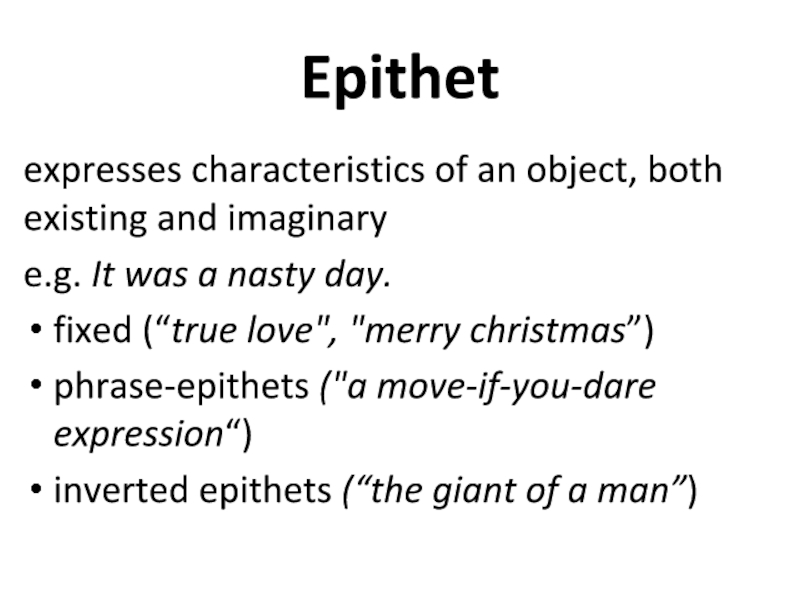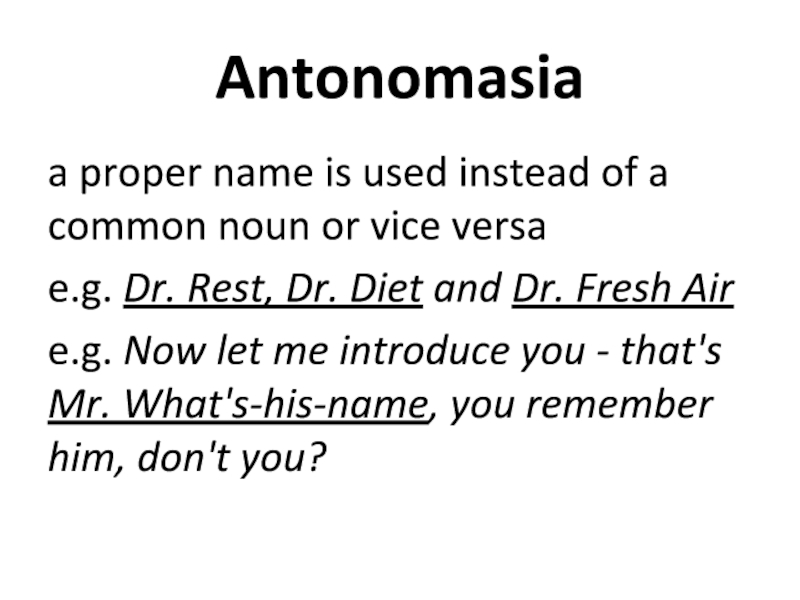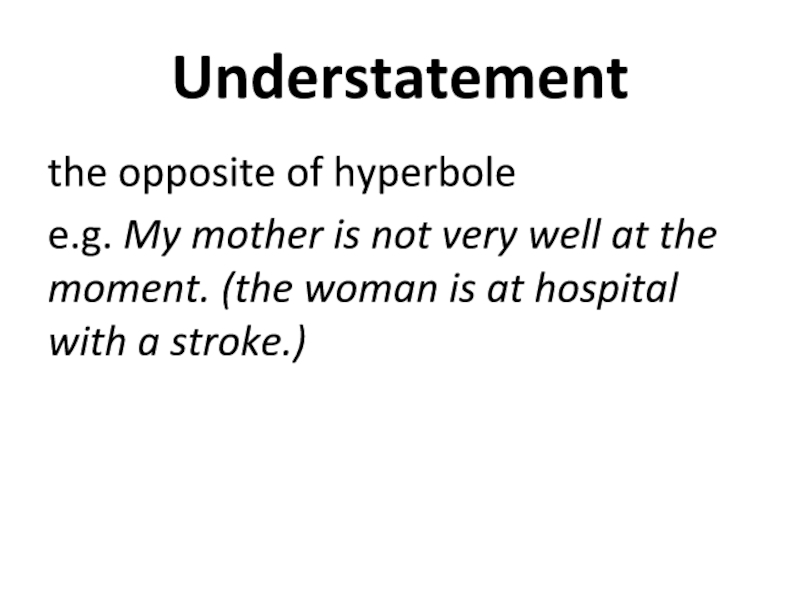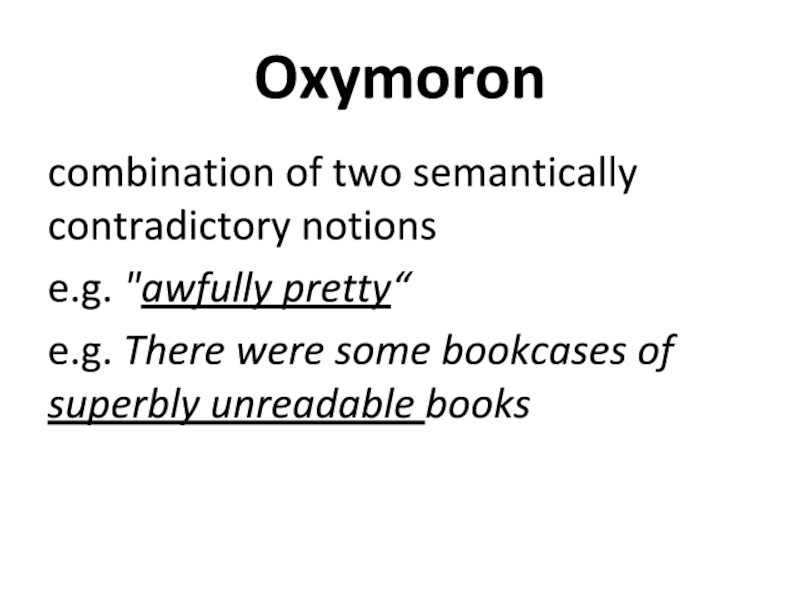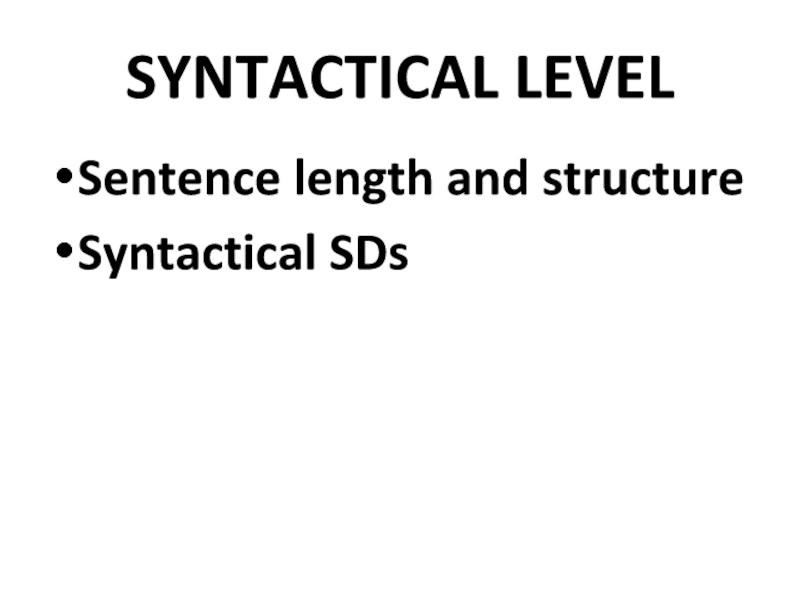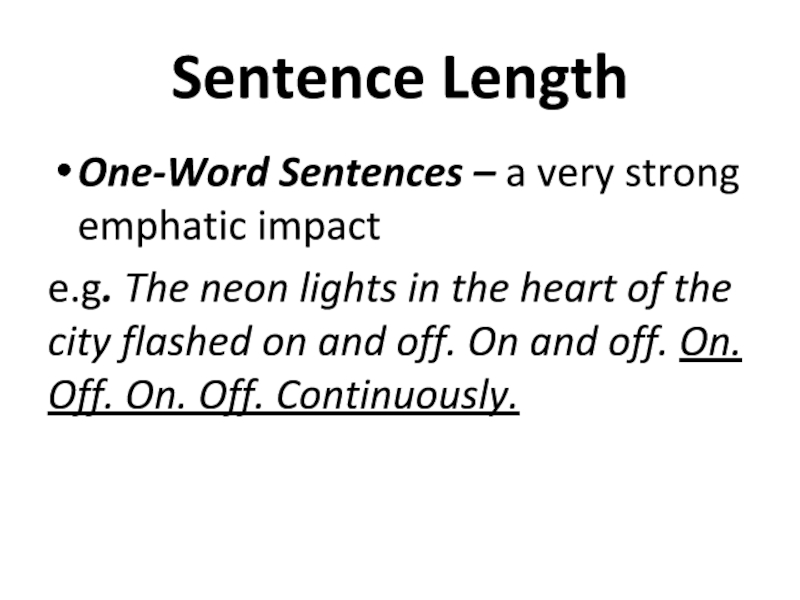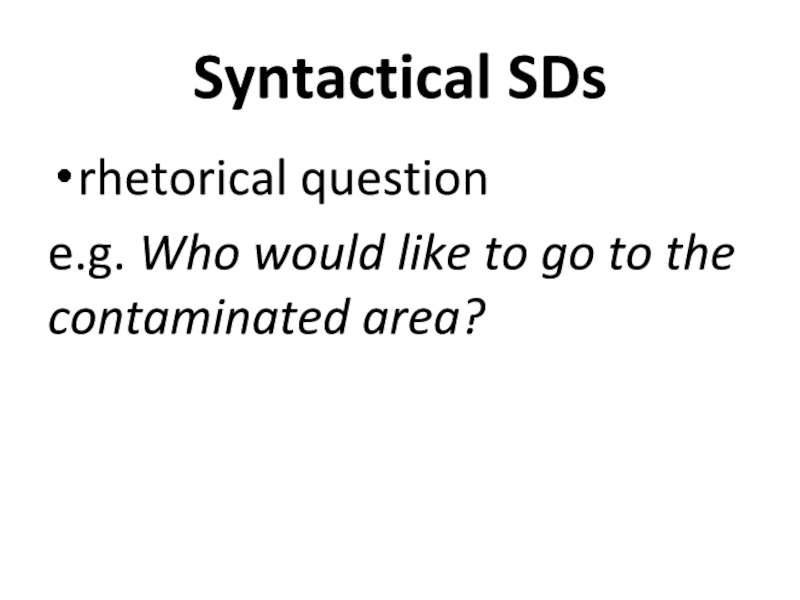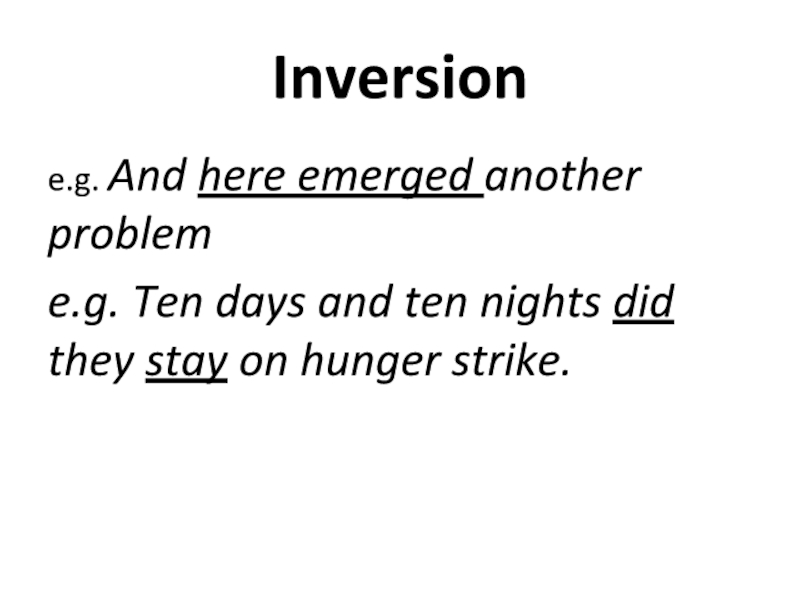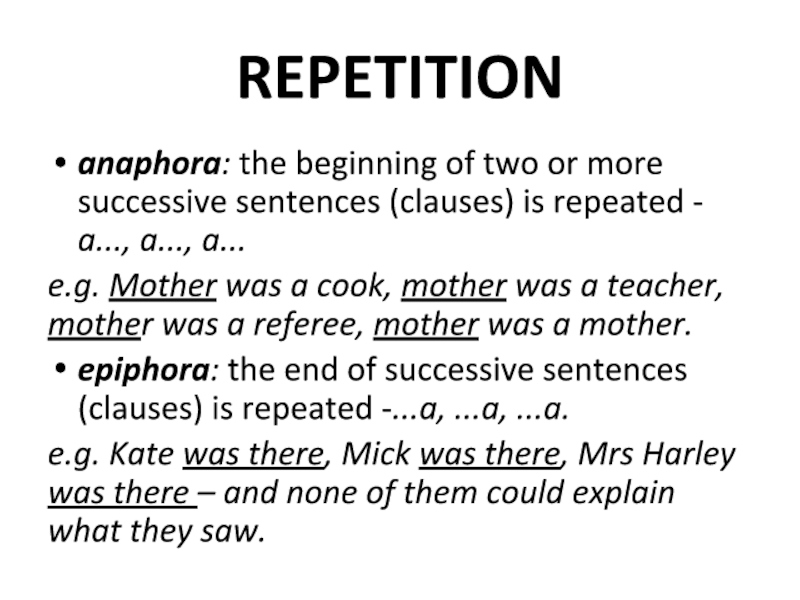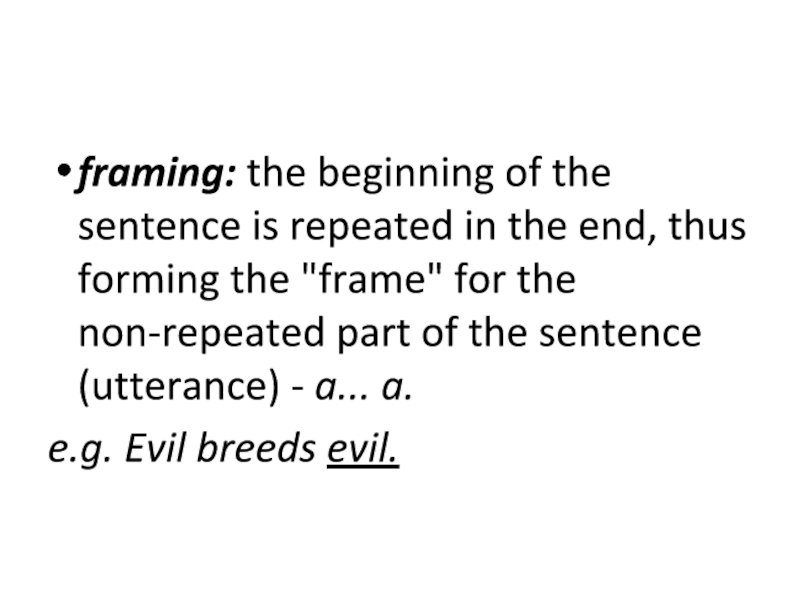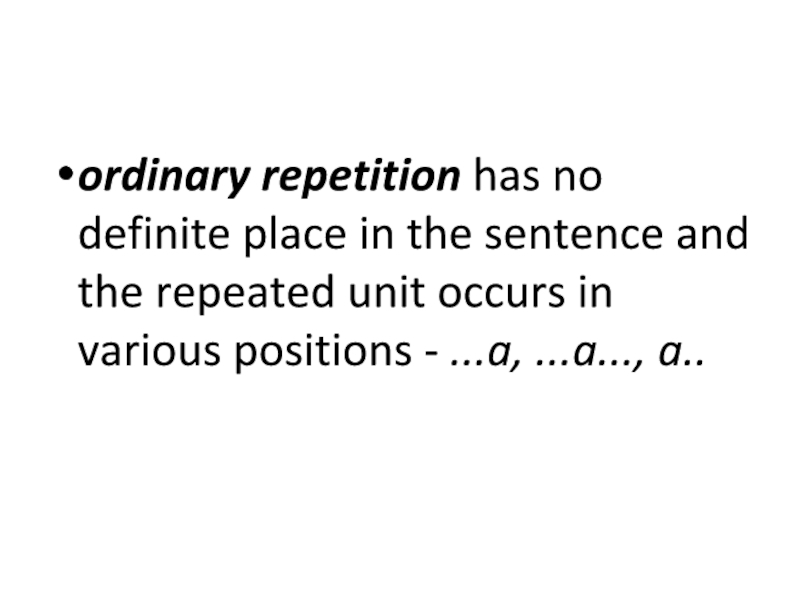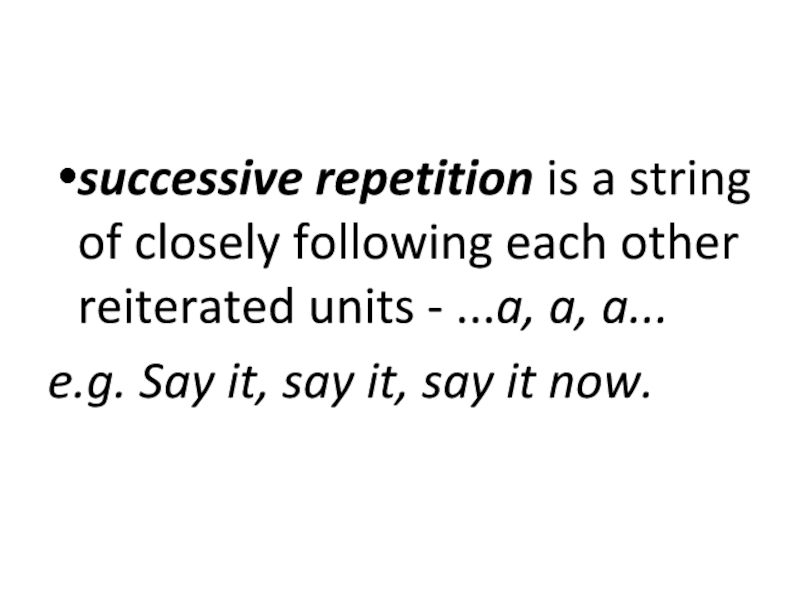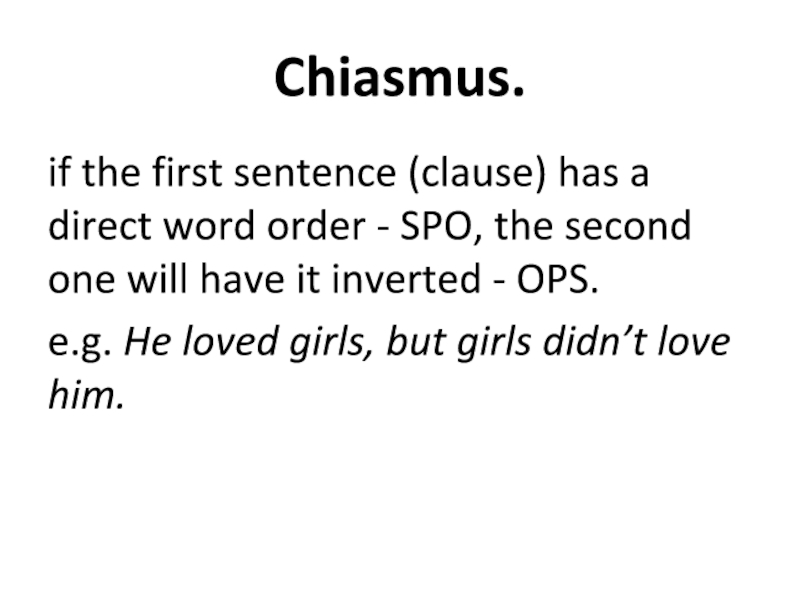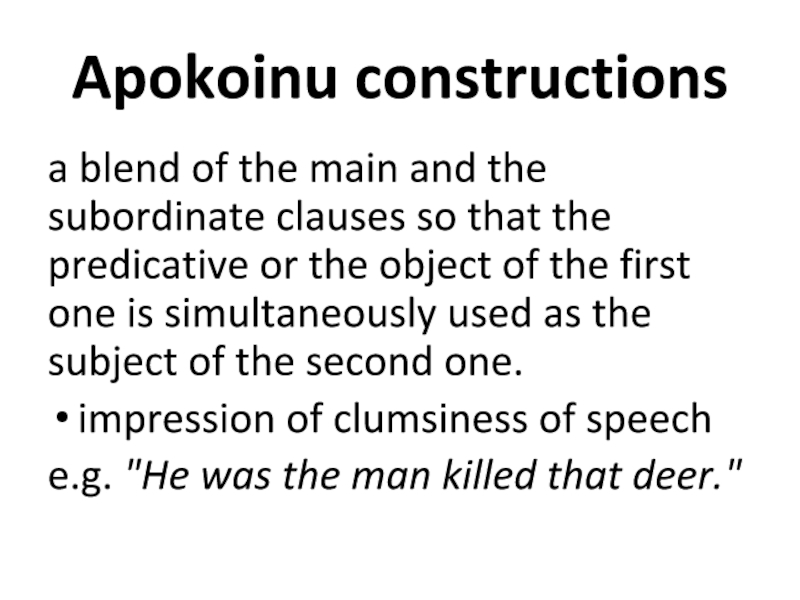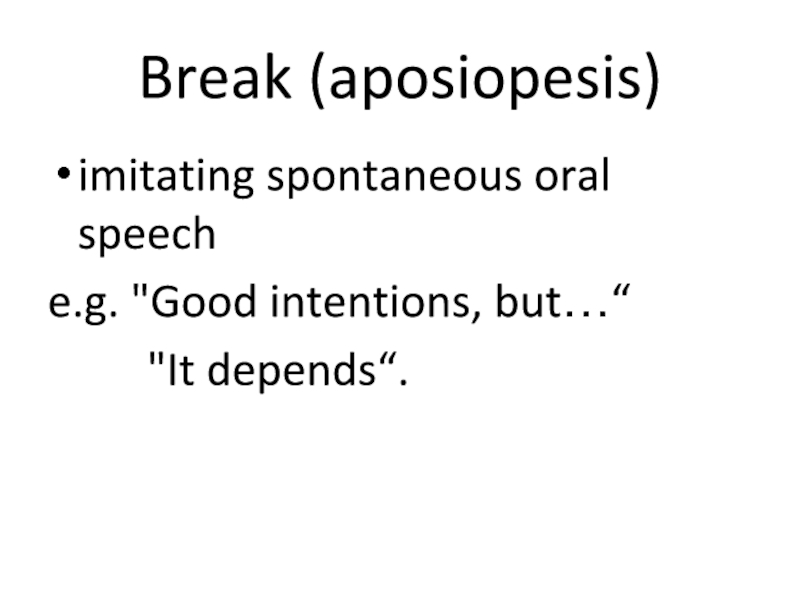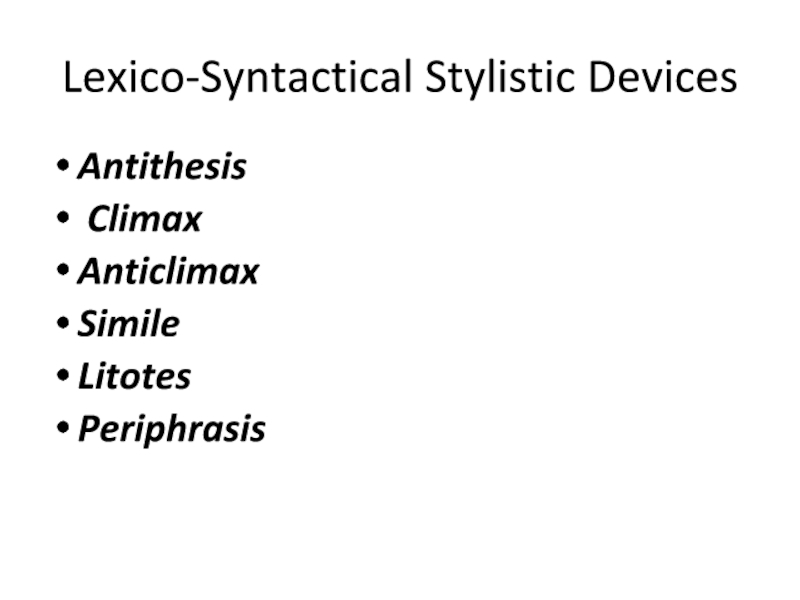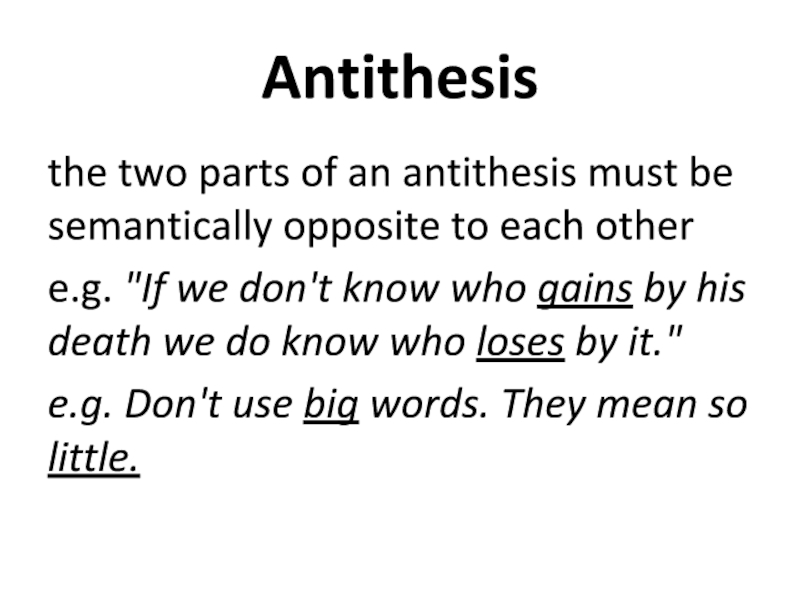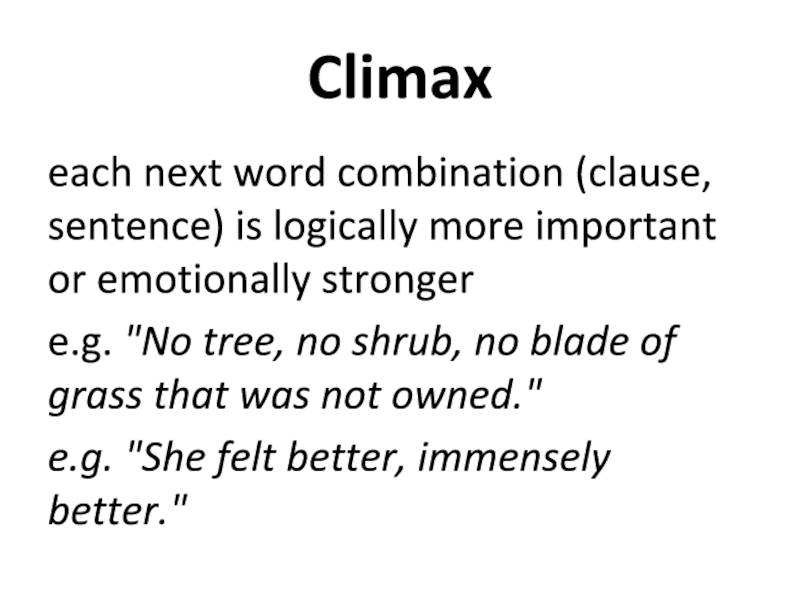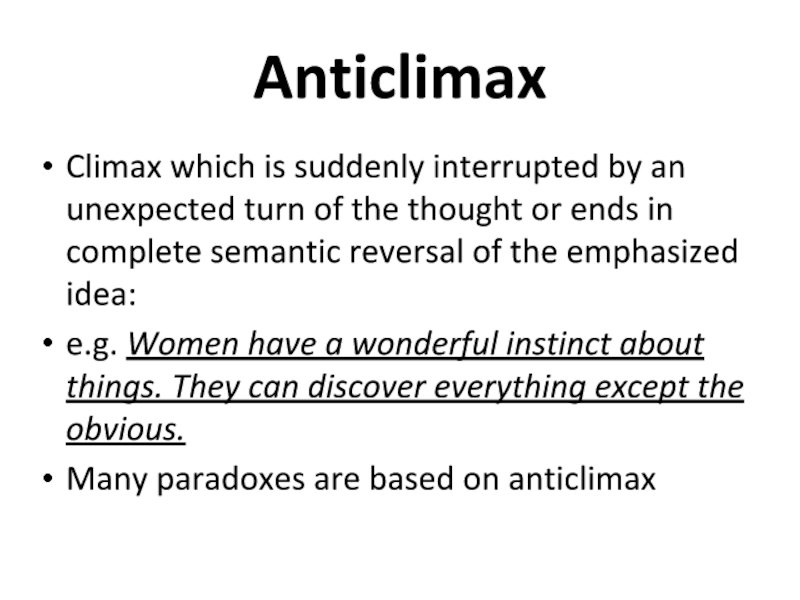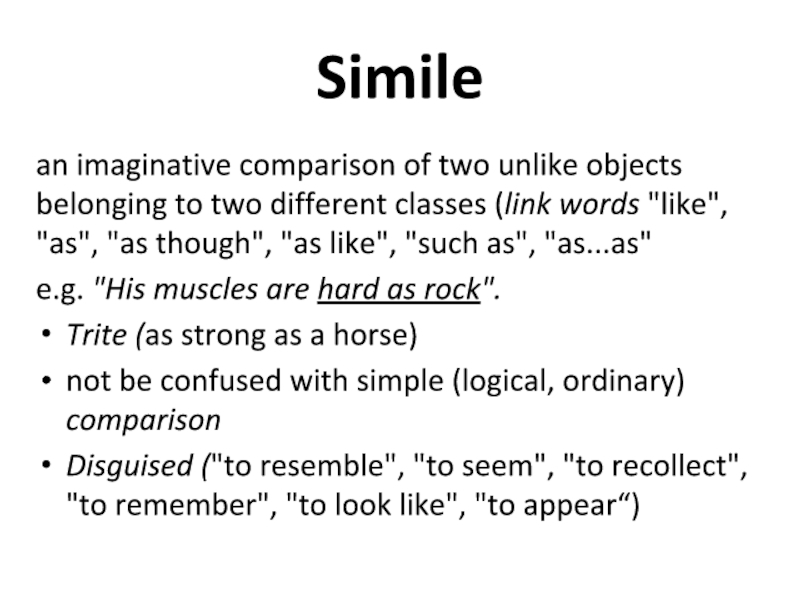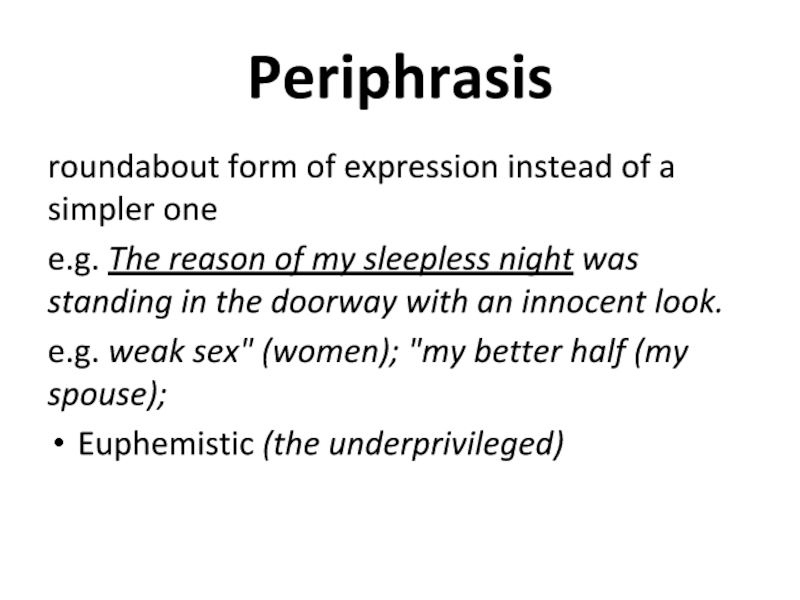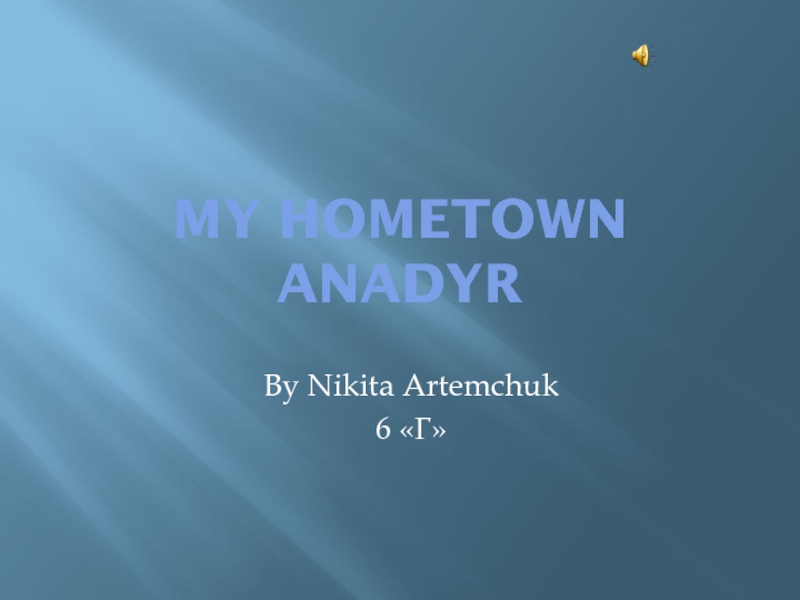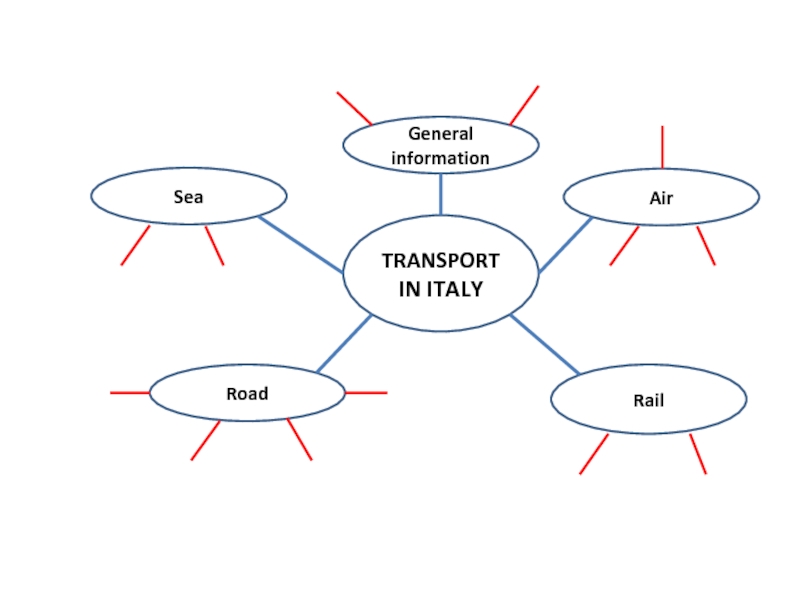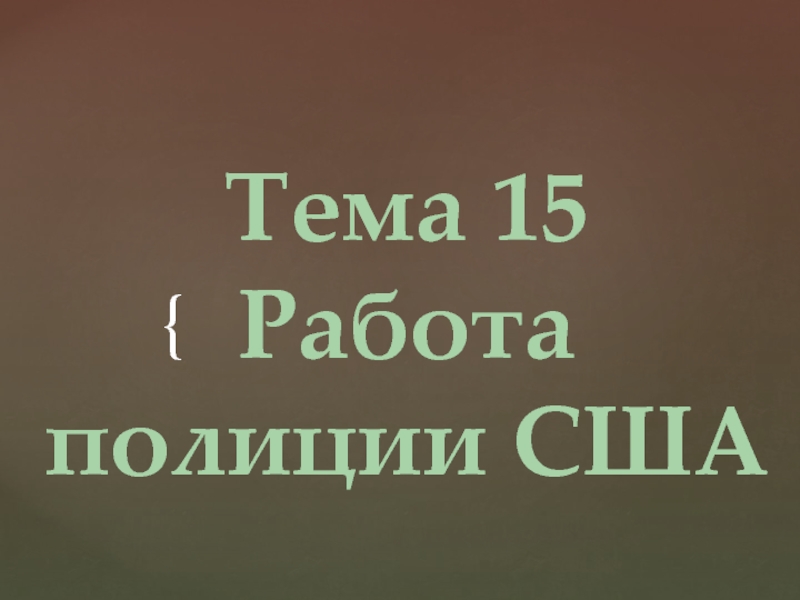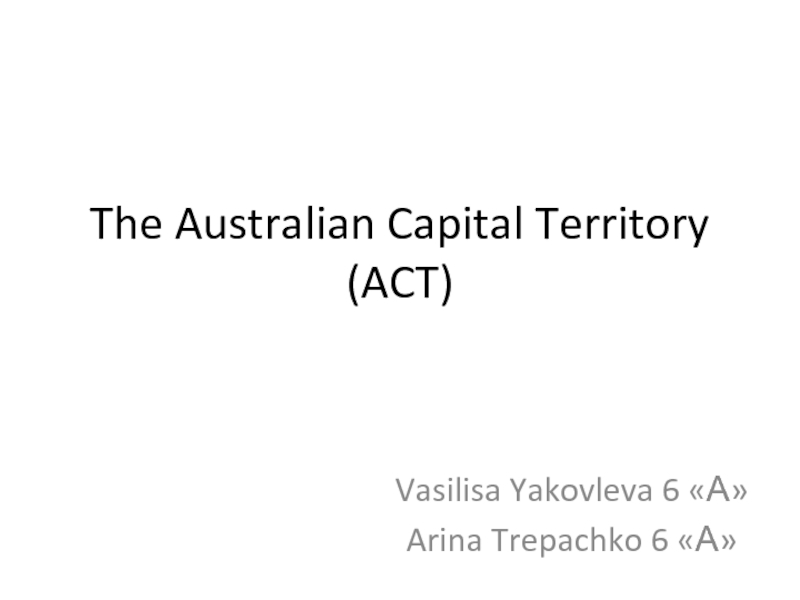- Главная
- Разное
- Дизайн
- Бизнес и предпринимательство
- Аналитика
- Образование
- Развлечения
- Красота и здоровье
- Финансы
- Государство
- Путешествия
- Спорт
- Недвижимость
- Армия
- Графика
- Культурология
- Еда и кулинария
- Лингвистика
- Английский язык
- Астрономия
- Алгебра
- Биология
- География
- Детские презентации
- Информатика
- История
- Литература
- Маркетинг
- Математика
- Медицина
- Менеджмент
- Музыка
- МХК
- Немецкий язык
- ОБЖ
- Обществознание
- Окружающий мир
- Педагогика
- Русский язык
- Технология
- Физика
- Философия
- Химия
- Шаблоны, картинки для презентаций
- Экология
- Экономика
- Юриспруденция
Lexical stylistic devices презентация
Содержание
- 1. Lexical stylistic devices
- 2. PHONO-GRAPHICAL LEVEL Phonetic means Craphon Graphical means
- 3. Phonetic means Onomatopoeia - the use
- 4. Alliteration –the repetition of consonants
- 5. Craphon intentional violation of the graphical shape
- 6. Graphical Means changes of the type (italics,
- 7. Lexical Stylistic Devices Metaphor Metonymy. Synecdoche Play
- 8. Metaphor transference of names based on the
- 9. Personification Qualities of animate objects are attributed
- 10. Metonymy. The whole object is named by
- 11. Synecdoche type of metonymy: is based on
- 12. Play on Words / Pun one
- 13. Irony the contextual evaluative meaning of a
- 14. Epithet expresses characteristics of an object, both
- 15. Antonomasia a proper name is used instead
- 16. Hyperbole deliberate exaggeration e.g. "I have told it to you a thousand times“.
- 17. Understatement the opposite of hyperbole e.g. My
- 18. Oxymoron combination of two semantically contradictory notions
- 19. SYNTACTICAL LEVEL Sentence length and structure Syntactical SDs
- 20. Sentence Length One-Word Sentences – a very
- 21. Syntactical SDs rhetorical question e.g. Who would like to go to the contaminated area?
- 22. Inversion e.g. And here emerged another problem
- 23. REPETITION anaphora: the beginning of two or
- 24. framing: the beginning of the sentence
- 25. catch repetition (anadiplosis). the end of
- 26. ordinary repetition has no definite place
- 27. successive repetition is a string of
- 28. Parallel constructions Repetition of the same
- 29. Chiasmus. if the first sentence (clause) has
- 30. Detachment a stylistic device based on
- 31. Apokoinu constructions a blend of the
- 32. Break (aposiopesis) imitating spontaneous oral speech
- 33. Lexico-Syntactical Stylistic Devices Antithesis Climax Anticlimax Simile Litotes Periphrasis
- 34. Antithesis the two parts of an antithesis
- 35. Climax each next word combination (clause, sentence)
- 36. Anticlimax Climax which is suddenly interrupted by
- 37. Simile an imaginative comparison of two unlike
- 38. Litotes a two-component structure in which two
- 39. Periphrasis roundabout form of expression instead of
Слайд 3Phonetic means
Onomatopoeia - the use of words whose sounds imitate those
of the signified object or action
e.g “hiss", "bowwow", "murmur", "bump", "grumble“, “growl”
e.g “hiss", "bowwow", "murmur", "bump", "grumble“, “growl”
Слайд 4
Alliteration –the repetition of consonants
e.g. He swallowed the hint with
a gulp and a gasp and a grin.
Assonance -the repetition of similar vowels
e.g. brain drain
Assonance -the repetition of similar vowels
e.g. brain drain
Слайд 5Craphon
intentional violation of the graphical shape of a word (or word
combination)
e.g. "gimme" (give me), "lemme" (let me), "gonna" (going to), "gotta" (got to), "coupla" (couple of), "mighta" (might have), "willya" (will you)
e.g. "gimme" (give me), "lemme" (let me), "gonna" (going to), "gotta" (got to), "coupla" (couple of), "mighta" (might have), "willya" (will you)
Слайд 6Graphical Means
changes of the type (italics, capitalization), spacing of graphemes (hyphenation,
multiplication) and of lines
e.g. "Help. Help. HELP."
e.g. "Help. Help. HELP."
Слайд 7Lexical Stylistic Devices
Metaphor
Metonymy.
Synecdoche
Play on Words.
Irony
Epithet
Hyperbole
Understatement
Oxymoron
Слайд 8Metaphor
transference of names based on the associated likeness between two objects
e.g.
He is a walking dictionary.
trite, hackneyed, stale ("leg of a table" )
fresh, original, genuine
sustained (prolonged) metaphor (through the text)
trite, hackneyed, stale ("leg of a table" )
fresh, original, genuine
sustained (prolonged) metaphor (through the text)
Слайд 9Personification
Qualities of animate objects are attributed to inanimate objects
e.g. The sun
is smiling at us.
e.g. He turned over another page of his life
e.g. He turned over another page of his life
Слайд 10Metonymy.
The whole object is named by its part
e.g. There is
no news from Downing Street, 10 yet.
Слайд 11Synecdoche
type of metonymy: is based on the relations between a part
and the whole
e.g. I need more hands down here.
e.g. I need more hands down here.
Слайд 12Play on Words / Pun
one word-form is deliberately used in
two meanings.
e.g. The Importance of Being Ernest
Zeugma - deliberately useof two or more homogeneous members, which are not connected semantically:
e.g. "He took his hat and his leave”.
e.g. The Importance of Being Ernest
Zeugma - deliberately useof two or more homogeneous members, which are not connected semantically:
e.g. "He took his hat and his leave”.
Слайд 13Irony
the contextual evaluative meaning of a word is directly opposite to
its dictionary meaning
e.g. 10 pounds for 10 days!? You are very generous. (meaning – greedy)
e.g. 10 pounds for 10 days!? You are very generous. (meaning – greedy)
Слайд 14Epithet
expresses characteristics of an object, both existing and imaginary
e.g. It was
a nasty day.
fixed (“true love", "merry christmas”)
phrase-epithets ("a move-if-you-dare expression“)
inverted epithets (“the giant of a man”)
fixed (“true love", "merry christmas”)
phrase-epithets ("a move-if-you-dare expression“)
inverted epithets (“the giant of a man”)
Слайд 15Antonomasia
a proper name is used instead of a common noun or
vice versa
e.g. Dr. Rest, Dr. Diet and Dr. Fresh Air
e.g. Now let me introduce you - that's Mr. What's-his-name, you remember him, don't you?
e.g. Dr. Rest, Dr. Diet and Dr. Fresh Air
e.g. Now let me introduce you - that's Mr. What's-his-name, you remember him, don't you?
Слайд 17Understatement
the opposite of hyperbole
e.g. My mother is not very well at
the moment. (the woman is at hospital with a stroke.)
Слайд 18Oxymoron
combination of two semantically contradictory notions
e.g. "awfully pretty“
e.g. There were some
bookcases of superbly unreadable books
Слайд 20Sentence Length
One-Word Sentences – a very strong emphatic impact
e.g. The neon
lights in the heart of the city flashed on and off. On and off. On. Off. On. Off. Continuously.
Слайд 22Inversion
e.g. And here emerged another problem
e.g. Ten days and ten nights
did they stay on hunger strike.
Слайд 23REPETITION
anaphora: the beginning of two or more successive sentences (clauses) is
repeated - a..., a..., a...
e.g. Mother was a cook, mother was a teacher, mother was a referee, mother was a mother.
epiphora: the end of successive sentences (clauses) is repeated -...a, ...a, ...a.
e.g. Kate was there, Mick was there, Mrs Harley was there – and none of them could explain what they saw.
e.g. Mother was a cook, mother was a teacher, mother was a referee, mother was a mother.
epiphora: the end of successive sentences (clauses) is repeated -...a, ...a, ...a.
e.g. Kate was there, Mick was there, Mrs Harley was there – and none of them could explain what they saw.
Слайд 24
framing: the beginning of the sentence is repeated in the end,
thus forming the "frame" for the non-repeated part of the sentence (utterance) - a... a.
e.g. Evil breeds evil.
e.g. Evil breeds evil.
Слайд 25
catch repetition (anadiplosis). the end of one clause (sentence) is repeated
in the beginning of the following one -...a, a....
chain repetition presents several successive anadiploses -...a, a...b, b...c, c
e.g. Human curiosity brought about science. Science led to progress. Progress is expected to enhance our wellbeing.
chain repetition presents several successive anadiploses -...a, a...b, b...c, c
e.g. Human curiosity brought about science. Science led to progress. Progress is expected to enhance our wellbeing.
Слайд 26
ordinary repetition has no definite place in the sentence and the
repeated unit occurs in various positions - ...a, ...a..., a..
Слайд 27
successive repetition is a string of closely following each other reiterated
units - ...a, a, a...
e.g. Say it, say it, say it now.
e.g. Say it, say it, say it now.
Слайд 28Parallel constructions
Repetition of the same grammar structure
e.g. Mother cooks dinner. Father
watches TV. Children bother mother and father at the same time.
Слайд 29Chiasmus.
if the first sentence (clause) has a direct word order -
SPO, the second one will have it inverted - OPS.
e.g. He loved girls, but girls didn’t love him.
e.g. He loved girls, but girls didn’t love him.
Слайд 30Detachment
a stylistic device based on singling out a secondary member
of the sentence with the help of punctuation (intonation)
e.g. She was crazy about you. In the beginning.
e.g. She was crazy about you. In the beginning.
Слайд 31Apokoinu constructions
a blend of the main and the subordinate clauses
so that the predicative or the object of the first one is simultaneously used as the subject of the second one.
impression of clumsiness of speech
e.g. "He was the man killed that deer."
impression of clumsiness of speech
e.g. "He was the man killed that deer."
Слайд 32Break (aposiopesis)
imitating spontaneous oral speech
e.g. "Good intentions, but…“
"It depends“.
Слайд 34Antithesis
the two parts of an antithesis must be semantically opposite to
each other
e.g. "If we don't know who gains by his death we do know who loses by it."
e.g. Don't use big words. They mean so little.
e.g. "If we don't know who gains by his death we do know who loses by it."
e.g. Don't use big words. They mean so little.
Слайд 35Climax
each next word combination (clause, sentence) is logically more important or
emotionally stronger
e.g. "No tree, no shrub, no blade of grass that was not owned."
e.g. "She felt better, immensely better."
e.g. "No tree, no shrub, no blade of grass that was not owned."
e.g. "She felt better, immensely better."
Слайд 36Anticlimax
Climax which is suddenly interrupted by an unexpected turn of the
thought or ends in complete semantic reversal of the emphasized idea:
e.g. Women have a wonderful instinct about things. They can discover everything except the obvious.
Many paradoxes are based on anticlimax
e.g. Women have a wonderful instinct about things. They can discover everything except the obvious.
Many paradoxes are based on anticlimax
Слайд 37Simile
an imaginative comparison of two unlike objects belonging to two different
classes (link words "like", "as", "as though", "as like", "such as", "as...as"
e.g. "His muscles are hard as rock".
Trite (as strong as a horse)
not be confused with simple (logical, ordinary) comparison
Disguised ("to resemble", "to seem", "to recollect", "to remember", "to look like", "to appear“)
e.g. "His muscles are hard as rock".
Trite (as strong as a horse)
not be confused with simple (logical, ordinary) comparison
Disguised ("to resemble", "to seem", "to recollect", "to remember", "to look like", "to appear“)
Слайд 38Litotes
a two-component structure in which two negations are joined to give
a positive evaluation
e.g. "Her face was not unpretty".
e.g. Kirsten said not without dignity: "Too much talking is unwise."
e.g. "Her face was not unpretty".
e.g. Kirsten said not without dignity: "Too much talking is unwise."
Слайд 39Periphrasis
roundabout form of expression instead of a simpler one
e.g. The reason
of my sleepless night was standing in the doorway with an innocent look.
e.g. weak sex" (women); "my better half (my spouse);
Euphemistic (the underprivileged)
e.g. weak sex" (women); "my better half (my spouse);
Euphemistic (the underprivileged)
